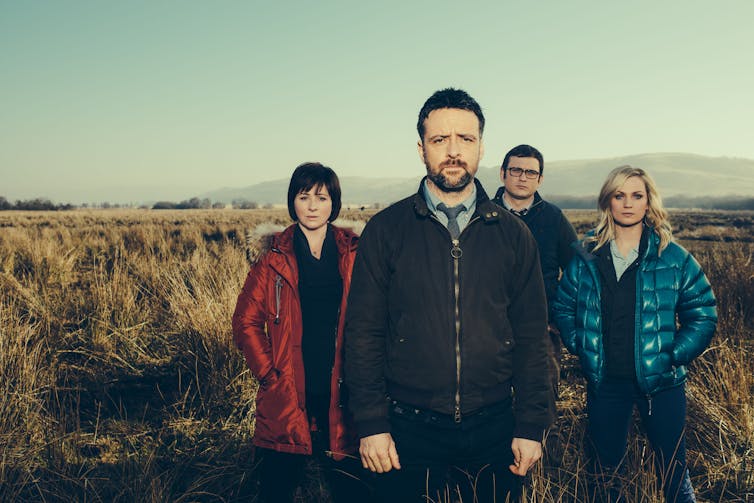
Y Gwyll, the Welsh title of the recent BBC drama Hinterland, translates as “The Dusk”: perhaps programmers were worried that viewers would mistake it for Twilight? Vampires and zombies certainly feature in a number of TV dramas at present, and in one respect that’s true of the series. Starting with a particularly haunted and ghostly episode set in a deserted children’s home, the four episodes broadcast this spring were characterised by the weight of the dead upon the living.
But neither the drag of the deceased nor the dregs of human violence, not even the creeping long-form plot about a secret society protecting its own is the real draw. Even the troublingly world-weary performance of Richard Harrington as DCI Tom Mathias, trailing a still mysterious backstory, doesn’t explain quite why this series, set in Mid Wales, stirs its audiences in the way the best of the Scandinavian crime dramas have been doing for the best part of a decade.
To say Wales is a land apart is not entirely right. BBC Wales has been at the front end of TV drama in the 21st century, with the Dr Who franchise, and commissions including Life on Mars and Sherlock. Dr Who spinoff Torchwood made a great deal not only of its Cardiff base but of the dramatic potential of South Wales locations. And those locations are in great part the secret of Hinterland.
The final episode, The Girl in the Water, begins with an untypically sun-drenched meadow, a pony browsing amid flowers, and pulls back to show, in the bronzes and browns of sedge, a young woman kneeling in the middle of it dressed in a flamboyant crimson dress. The series is full of such enigmatic moments: an elderly woman clambering over seashore rocks barefoot in a white nightie, a lone shed ablaze at twilight on the lee of a black hill.
Like the the series shown shortly before by BBC One, Shetland, Hinterland takes us to the celtic fringes of the UK. There’s a great line in Shetland, in an episode set on Fair Isle, when the protagonist’s father and local vicar tells his son there are only 70 souls on the island, so a murder has to be cleared up quickly before the community breaks down.
In its bilingual version, community is flagged by the Welsh language. Welsh is spoken by all the cast in the Welsh version, but our protagonist is excluded by speaking only English. That exclusion/inclusion ambivalence is precisely where the drama springs from. And it is not purely linguistic. These tragedies are bred in the landscape.
Ireland won the first anti-colonial war against the English in 1922. Scotland is taking its electoral chance this year. Wales has no less a colonial history, though its tragedies are of a different order. A landscape is a history, just as much as it is geography. To belong and not to belong, to commune and to communicate: these are primal dramas, but they are lived out in each generation in their own unique form of unhappiness. Far from the country house, such dramas reintroduce us to the dark histories of the UK’s rural hinterlands. Perhaps the translation was the right one after all.
